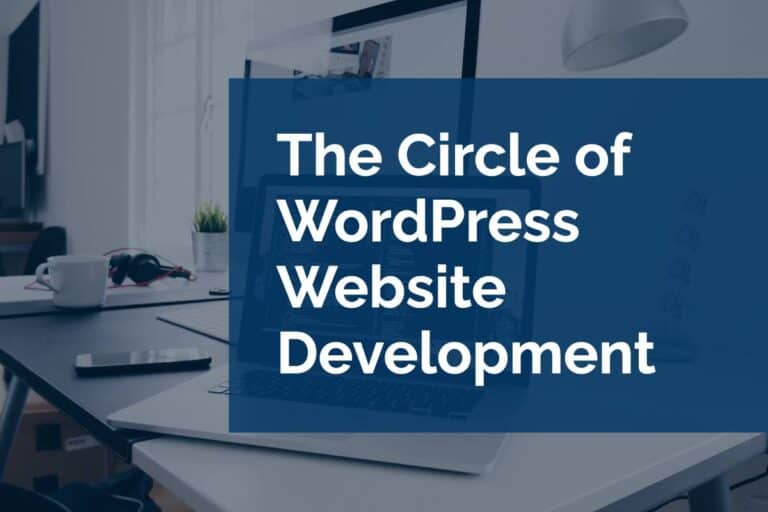Taking the Temperature of Medical Website Design
Medical website design may seem like a single discipline to focus on. The reality is that there are several distinct markets that can require their own type of website. While this list of markets isn’t exhaustive, (for example prescription drug fulfillment services also have their own set of requirements) it does serve as an excellent point to discuss the differences in approach. We focus a lot of our web development on the medical field.
Medical Practices
These sites are focused on a specific practice or individual practitioner. This could be your corner dentist or the dermatology office in the local strip mall. The main factor here is that it’s a single or a small group of medical professionals and they want to have a web portal that reflects their individual practice.
Medical practitioners need to communicate many of the same things that any business does: location, hours, contact information, and the services they offer. They want to offer client testimonials, have great photography, and possibly reviews.
There are a few key areas that are unique to a medical website design for a practice:
- Appointments – The most important feature for a medical practice is a quick and efficient way for patients to make an appointment. Most practices have multiple options for making an appoint. This way the patient can interact in the manner that’s most comfortable for them.
- Doctor Profiles – Visitors want to be able to read about their doctor so they know more about who they’re going to see. Degrees, years in practice, and areas of expertise are all great to feature.
- Customer retention and communication – Most practices focus on patient retention. As with many businesses, the cost of retention is much lower than the cost of acquiring a new customer. The medical industry exemplifies this maxim. In many cases, you will make the next appointment before leaving the appointment you’re attending. Practices are becoming very focused on this outreach and have started to employ methods on their websites to engage patients via social media, texting, and email.
- HIPAA compliance – HIPAA is the Health Insurance Portability and Accountability Act. Part of this act requires that security measures be put in place to protect sensitive patient data. If your medical practice website has a patient portal of any kind then you need to be focused on HIPAA compliance. Many smaller practices forgo this feature, but it definitely become a factor for our next market segment.
Medical Facilities
The medical facilities market has a a lot of similarities with the medical practitioners. In fact, it is often just be a matter of scale in most cases. A medical facility can be based around a hospital or a health system. This can be a much larger pool of doctors and much more administrative overhead.
Since scale is a larger factor, there are some additional considerations:
- Search features – Patients need to be able to look for doctors within the system. In addition, they may need to be able to filter by specialty, languages spoken, locations, or other taxonomies.
- Patient engagement – Since personal interaction will be at a premium, medical facilities look for easy wins regarding patient attention. Feedback on visits, test result notifications, and other automated forms of engagement are often employed. A lot of these tie into a patient portal and, as mentioned previously, HIPAA compliance is a crucial element.
Medical Devices
The market that is most often overlooked is the medical device field. There are innovations in medical technology happening all the time. Whether it’s a new assistive device or a new method for presenting test results, you need a website to reach a larger audience and get funding.
Medical devices have some extra complexity. Many medical devices don’t sell directly to patients. Instead they have a B2B audience and they sell to medical practitioners, hospitals, or healthcare systems. This means the messaging and approach has to be handled in a different way than a traditional sale. Benefits need discussion, not only in terms of the features of the device, but also in terms of benefits to the larger organization.
Ecommerce components tend to be less of a shopping cart solution and more of a purchase process. Often a representative will personally handle these larger accounts so that pricing, delivery, white labeling, and other features that are difficult to automate can be discussed.
Medical website design for devices needs to focus much more on benefits then it does on features.
Common Factors in Medical Website Design
While we talked about how the specific markets have different needs, there are some factors that are similar. Medical sites are very clean, organized, and easy to follow. Photography is light, bright, and emphasizes the positive. Medical sites tend to follow a similar color palette with white and blue being predominant. The use of red is also common. While these are not immutable choices, there can be a significant benefit by designing to expectations.
The medical field is too vast to be pigeon-holed into one solution or even a handful. You need to focus on the goals of the website and build to those needs. If you need help developing your site, reach out to Pixel Jar.





